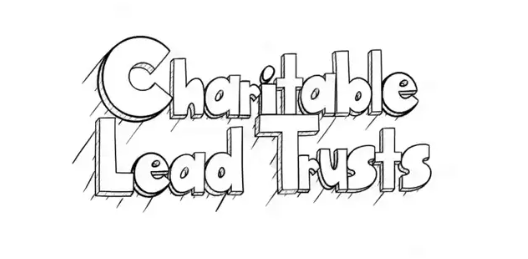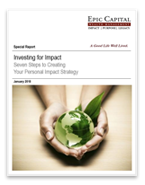Charitable Lead Trusts
Mar 10, 2023

Are you concerned about the inheritance taxes your heirs may have to pay? Then you may want to consider creating charitable lead trusts.
A charitable lead trust is the inverse of a charitable remainder trust. While a CRT is structured to provide income to the trust beneficiaries and an eventual charitable donation, a CLT provides a charitable gift at its implementation plus the possibility of eventual income to your heirs.
Charitable Lead Trusts may provide an estate tax solution for a highly appreciated asset. As a hypothetical example, a multi-millionaire named Scott owns $1 million of greatly appreciated blue-chip stock. He wants to reduce the value of his taxable estate; he does not want to burden his heirs with death taxes. He would also like to make a major gift to a local charity. So Scott collaborates with an estate planning attorney to draw up and implement a CLT.
By gifting the highly appreciated stock to the charity using a CLT with a term of 20 years, Scott creates an income stream for the charity with significant tax benefits as a byproduct. Income payments to the charity will be made in 20 yearly installments of $50,000 from the trust principal. After either 20 years or Scott’s death, his heirs will receive the interest off of the initial CLT principal (i.e., the appreciation on those shares across 20 years) while the actual shares will go to the charity.
In donating the stock through the Charitable Lead Trust, Scott is eligible to take an upfront income tax deduction for the full value of the charitable donation. He receives a gift and estate tax break equivalent to what would happen if he simply wrote a $1 million check to the charity, while also offering a potential financial benefit to his heirs.
All Charitable Lead Trusts are irrevocable, and there are different varieties of them. Here is a brief breakdown of their variations, and their characteristics.
*CLTs can be created either before one’s death or at one’s death. In an inter vivos CLT, the grantor (i.e., donor) relinquishes ownership of the asset(s) to the trust while alive. Asset(s) transfer into a testamentary CLT only upon the death of the grantor. An executor to a testamentary CLT can fund that CLT with assets equaling any inheritance taxes owed.
*Some CLTs are structured to allow further asset contributions during the trust term. Other CLTs are designed so that no further contributions to the trust are permitted once the trust is active.
*Most CLTs are non-grantor trusts. These CLTs are expressly designed to benefit a charity and the donor’s heirs. In a non-grantor CLT (such as the above example), the donor gives away the asset(s) to charity; heirs receive only the interest on the principal at the end of the trust term. You can see the potential downside: if the asset depreciates over the trust term, the heirs receive nothing. In a non-grantor CLT, the donor is able to take an annual income tax deduction on the value of the income that heads to the charity discounted at the federal funds rate.
*Other Charitable Lead Trusts are grantor trusts. These CLTs are primarily designed to benefit a charity and the donor. The charity receives income off the trust principal for X years, but the donor will regain ownership of the appreciated asset(s) when the trust term expires. The donor gets to claim an upfront income tax deduction for the gift. In this variation, the donor pays taxes on the income the CLT generates, so it is wise to put tax-exempt investments into a grantor CLT.
An IRS formula figures the future value of the donor’s gift. The variables here include the annual income the charity will receive, the duration of the CLT and the projected ROI for the trust asset(s). The IRS determines the ROI using an interest rate (the “hurdle” rate) based on Treasury yields. Non-charitable beneficiaries of the CLT are projected to receive the value of the trust assets at the end of the trust term minus the value of the initial gift. This amount will be exposed to estate taxes, but in many cases it will be far less than the generous estate tax exemption.
CLTs allow you to pursue three estate planning objectives. If you want to make a sizable charitable gift, help your heirs and reduce taxes, you may want to explore creating one. If you need help setting one up, reach out to a dedicated financial professional at Epic Capital today.
For more insights and resources, be sure to sign up for our Weekly Market Commentary. Follow our YouTube channel where we regularly post our Epic Market Minute videos. Follow us on LinkedIn, or like us on Facebook. And as always, please don’t hesitate to reach out to a dedicated service professional at Epic Capital.
Tags: Estate Planning, Family Wealth, Financial Planning, Legacy, Wealth Building
More Insights
Key Takeaways Volatility came back with a vengeance this week as selling pressure in the mega cap space dragged down the broader market. Counterbalancing weakness in these heavyweight names poses a challenge for the rest of the market. Overbought conditions can also be blamed for the recent weakness. The S&P 500 reached a 14.9% premium … Continue reading “Market Update – Assessing the Technical Damange”
Life insurance can be an excellent tool for charitable giving. Not only does life insurance allow you to make a substantial gift to charity at relatively little cost to you, but you may also benefit from tax rules that apply to gifts of life insurance.
When you think of Social Security, you probably think of retirement. However, Social Security can also provide much-needed income to your family members when you die, making their financial lives easier. Your family members may be eligible to receive survivor benefits if you worked, paid Social Security taxes, and earned enough work credits. The number … Continue reading “Social Security Survivor Benefits”
Information vs. instinct. When it comes to investment choices, many people believe they have a “knack” for choosing good investments. But what exactly is that “knack” based on? The fact is, the choices we make with our assets can be strongly influenced by factors, many of them emotional, that we may not even be aware … Continue reading “Making Investment Choices”
As a business owner, you should carefully consider the advantages of establishing an employer-sponsored retirement plan. Generally, you’re allowed certain tax benefits for establishing an employer-sponsored retirement plan, including a tax credit for establishing the plan and a deduction for contributions you make. In return, however, you’re required to include certain employees in the plan, … Continue reading “Retirement Plans for Small Businesses”
Services
Epic Capital provides the following comprehensive financial planning and investment management services: Learn More >


 Top of Page
Top of Page











